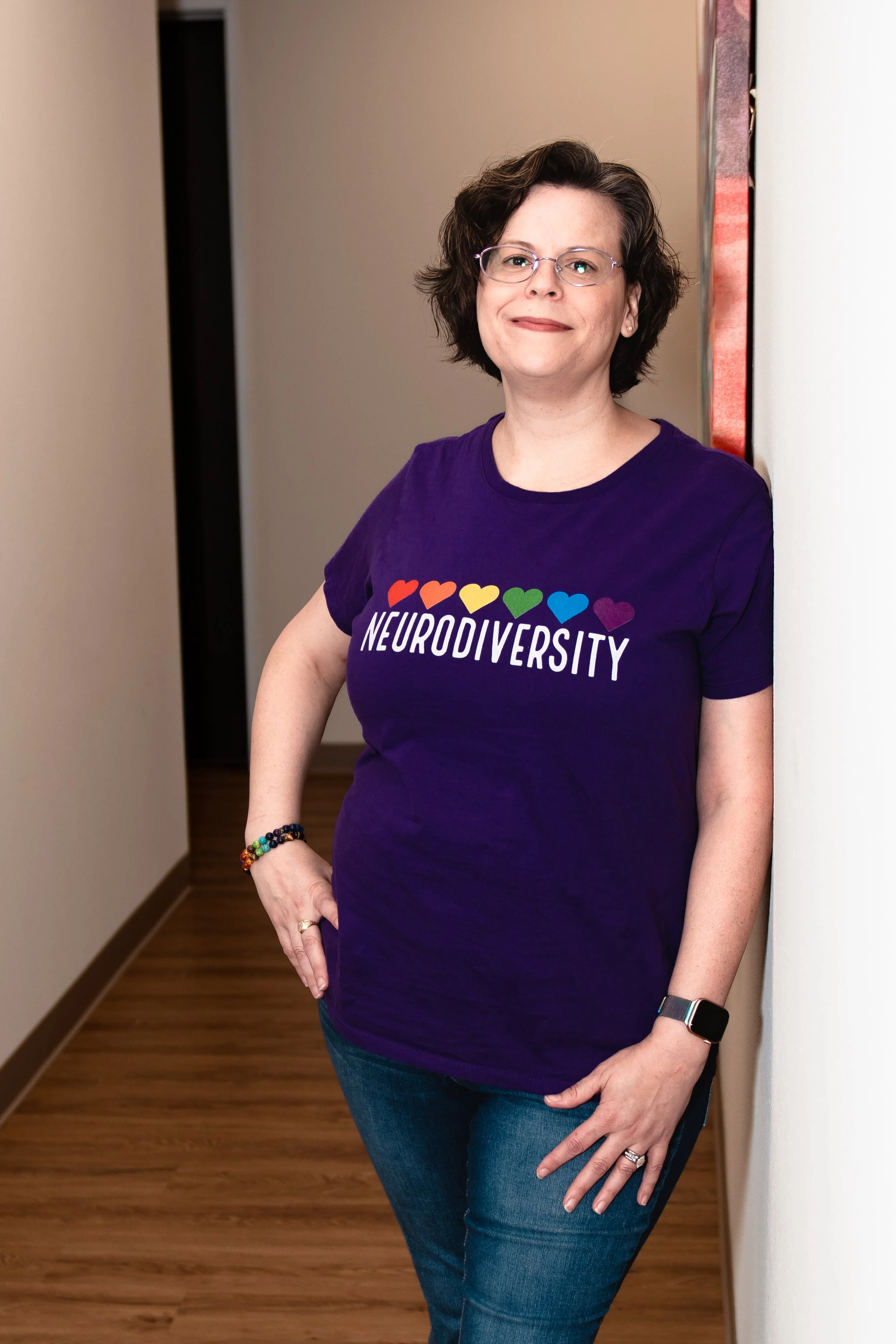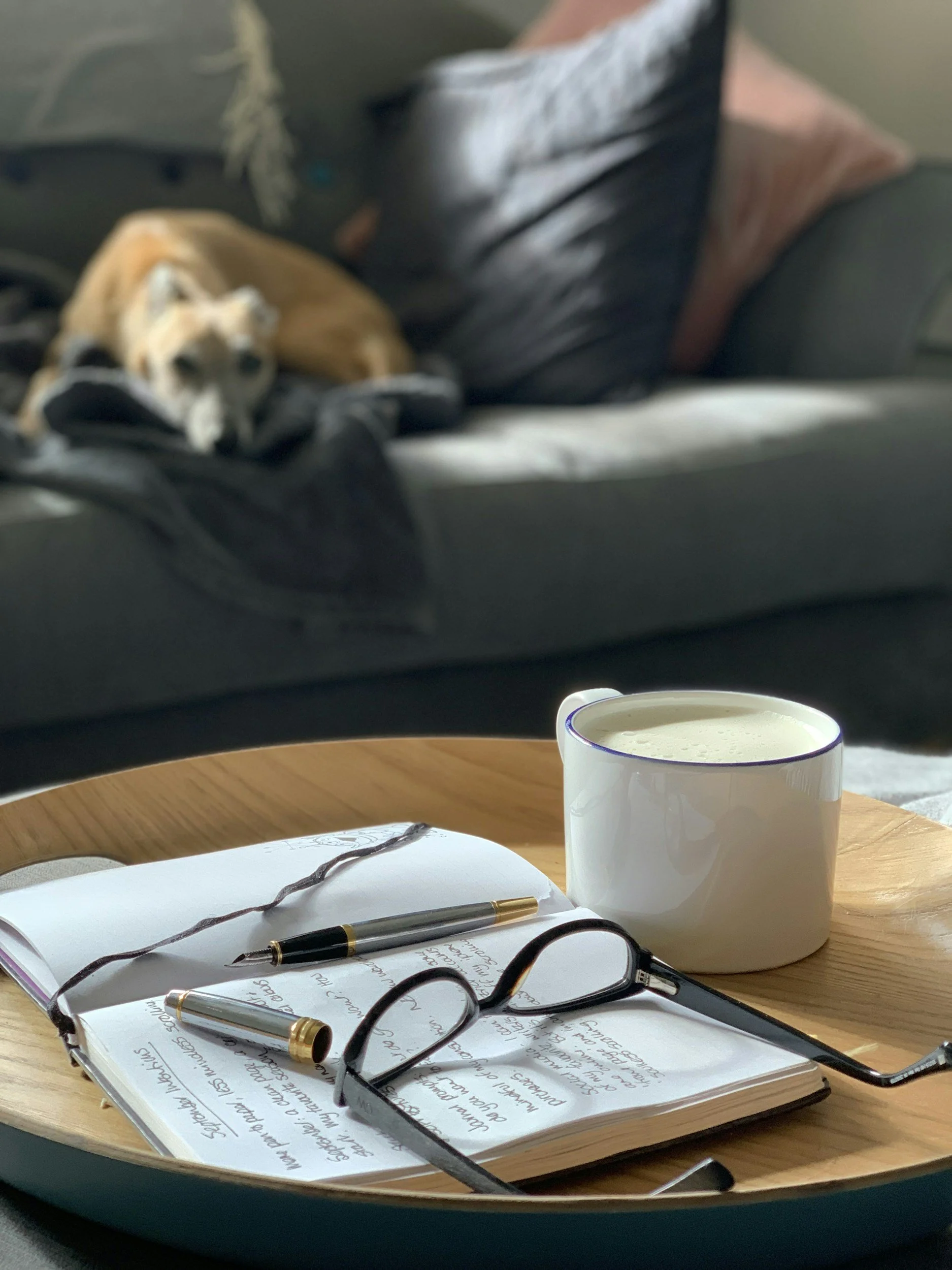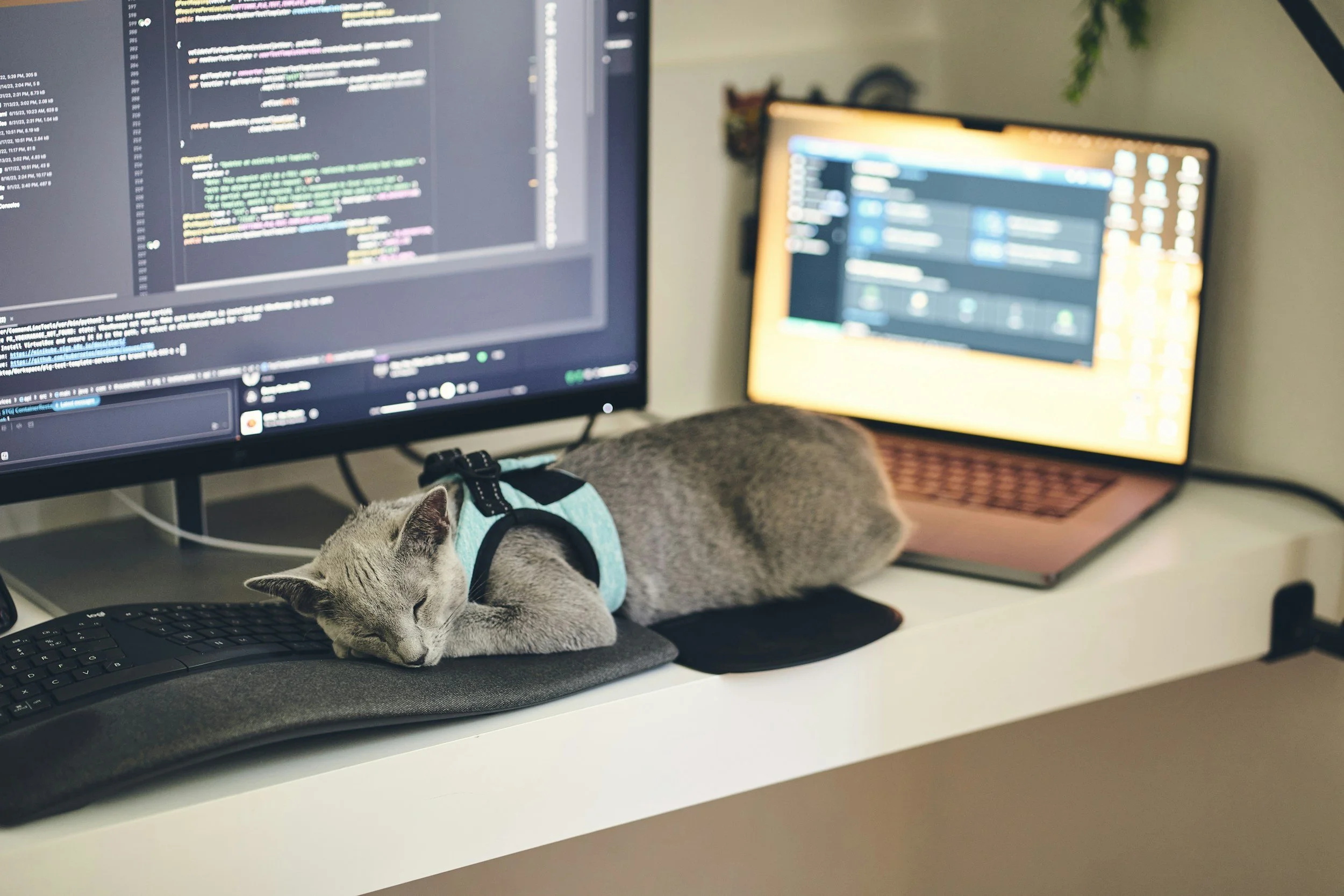Online Therapy for Adults Navigating Trauma, Grief & Neurodivergence
You’re already used to connecting online through remote work, video calls, online friendships or scrolling with a pet in your lap. So it makes sense that therapy would happen here too in your own space, with your comforts nearby.
If you’re an adult who’s been late-diagnosed with ADHD or autism or you identify as a highly sensitive person and you’re now untangling who you are after that discovery, you’re not alone. Maybe you’re also carrying grief, complex trauma, or religious wounds that still show up in quiet moments. You’re looking for therapy that actually fits. Where you don’t have to explain how your brain works. Where you can just show up as you are.
This space is for you.
Go to a comfy spot, grab a blanket, get your pet, and let’s get started with a free 20 minute consultation.

Why I (and My Clients) Love Virtual Therapy
Show Up as You Are
We’re already working, connecting, and building relationships online. Therapy doesn’t need to be any different. No awkward waiting rooms, no trying to look “put together” just to sit on someone’s couch. Just the real you, showing up as you are, in a space that feels safe.
No commute
No more racing the clock to make it across town, circling for parking, getting stuck in traffic or panicking because you can’t find the office. With virtual therapy, all your energy can go toward the work itself not just getting there and back.
You save more than just time
No gas, no rideshares, no sitter costs just you getting the care you need without all the extra logistics.
Work with someone who actually gets you
When therapy is virtual, you're not limited to whoever happens to be nearby. You can work with someone who gets the way your brain loops, your need for real talk, and why surface level support just doesn’t cut it.
It fits your life whatever that looks like
Whether you’re squeezing in a session between work meetings or need to take a call from your car to get privacy, virtual therapy makes it easier to show up without turning your day upside down.
How I Show Up to Therapy
It’s not stiff or overly clinical. We meet face-to-face (on screen), just like we would in a therapy office but you get to stay in your space, with your comforts nearby. Sometimes you’ll show up with a list of things for us to talk about, sometimes a weighted blanket and your dog or cat curled up next to you.
Some days, we’ll dive deep. Other days, you might info dump or show me a meme that perfectly explains your experience perfectly.
Want to know more about who I am, how I work, or what really matters to me? Please visit my about me page.

How to Get the Most Out Of Online Therapy
Creating a Private Space for Online Therapy
Select a place where you will have privacy from other people who may be in the environment. Please ensure that no one else is in the room during your session. Choose a place where you will feel safe talking. It can take away from your session if you are constantly worrying that someone is hearing you talk about them. People have done sessions from bedrooms, closets, bathrooms, or sitting in a parked car.
Use a sound machine or fan if you are worried about people being able to hear you talking during your online counseling appointment.
Use headphones with a microphone if possible. This will prevent people from hearing your session but also reduce the change of an echo so you will be able to each other clearly.
Dedicate the Time Just as You Would a Face-to-Face Session
Try to avoid multitasking even if your brain loves background noise.
Therapy works best when you’re not answering emails or checking notifications. But fidgeting, doodling, or moving a little? Totally fine. If it helps you focus or feel grounded, it’s welcome here. You don’t have to sit perfectly still to be fully present.Be stationary and do not drive during your virtual therapy session. Even if you often drive and talk with someone on your way to work this will not work for online therapy.
If you’ve been scrolling, nodding along, and thinking “okay… this might actually feel like a fit” go ahead and schedule your free 20-minute consult. No pressure. Just fill out the form. I’ll send you an email, and we’ll find a time to hop on a quick video call to meet and see if it feels like a good fit.

A Few Easy Tweaks to Make Virtual Therapy Work Better
If possible, use a computer instead of your phone. Using a larger screen will help it feel more like in person therapy by being better able to see the therapist. If you cannot use a computer your phone will work, however, be prepared to be interrupted by incoming phone calls and texts which can be distracting.
Prop up your device or phone so it is eye level. This will help the therapist be able to read your facial expressions. Holding the device often becomes a distraction for both you and the therapist.
Have good lighting so your therapist can see you and avoid having a bright light behind you.
Close out any programs running on your computer or phone. This can impact your internet connection.
Check Your Internet Connection
For virtual therapy to feel grounded and connected, a steady internet signal matters more than you’d think. You can run a quick speed test to check yours. Look for at least 50 Mbps download and 10 Mbps upload to keep things smooth. If your video has been freezing or glitching, try plugging in directly, moving closer to the router, or turning off other streaming services during session.
Frequently Asked Questions
-
Yes. For many people, especially neurodivergent folks or those with trauma histories., online therapy can actually feel more effective. You’re in your own space, you’re not rushing to get there, and you’re often more regulated from the start. The connection can still real, even through a screen.
-
We’ve all had the frozen-face moment. If something goes wrong with the connection, we’ll troubleshoot together. I’ll send backup links or switch platforms if needed, and worst case, we finish by phone.
-
I’m an out-of-network provider, which means I don’t bill insurance directly. But I can give you a “superbill” to submit to your insurance for possible reimbursement. Some clients choose not to use insurance at all for privacy, more flexibility, or to avoid having a diagnosis on record just to get support.
-
As long as you’re located in a PSYPACT participating state (there are currently 40+), we can still meet. Whether you're in a hotel room, an office, or a parked car, if it’s private and quiet, it works. Therapy can travel with you.
-
Nope. Pets are welcome, but not required. If your dog snoozes nearby or your cat strolls across the screen mid-session, that’s a bonus. I see them as part of your support crew. They usually know when you’re feeling something big before you do.
And if you don’t currently have a pet? Totally fine. If you're the kind of person who gets the comfort animals bring even if it’s just sending a video of other people’s pets this space is still for you.
-
Online therapy works well for a lot of people especially if you have a private space and feel comfortable using video. But it’s not right for everyone.
If you're having active thoughts of hurting yourself and don’t have support, are experiencing symptoms that are really impacting your ability to function day-to-day, or find it hard to focus in virtual sessions, a face-to-face therapist or more intensive support may be a better fit.
-
Most people benefit from meeting weekly, especially at the start. It helps us build consistency, stay connected to the work, and actually get into the deeper stuff without feeling like we’re starting from scratch each time. Weekly sessions create space to move beyond surface-level check-ins and into real progress.
That said, some folks feel like they need more time to process between sessions. Every other week can absolutely work, depending on your needs and goals. I only offer monthly sessions for clients who are in more of a maintenance place not actively moving through big transitions or distress.
Curious if we’d click?
Book a free 20-minute consult. No pressure, no awkward small talk, just you telling me what you’re looking for, me sharing how I work, and together we see if it’s a good fit.
Contact me for your free 20 minute consultation!
Online individual therapy available in Houston, Austin, Dallas, San Antonio, Texas, Indianapolis, Columbus, Ohio and several other cities, states. See therapy locations.







